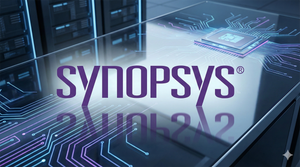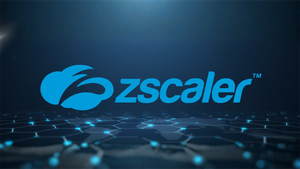
The relentless ascent of Artificial Intelligence (AI), particularly the proliferation of generative AI models, is igniting an unprecedented demand for advanced computing infrastructure, fundamentally reshaping the global semiconductor industry. This burgeoning need for high-performance data centers has emerged as the primary growth engine for chipmakers, driving a "silicon supercycle" that promises to redefine technological landscapes and economic power dynamics for years to come. As of November 10, 2025, the industry is witnessing a profound shift, moving beyond traditional consumer electronics drivers to an era where the insatiable appetite of AI for computational power dictates the pace of innovation and market expansion.
This transformation is not merely an incremental bump in demand; it represents a foundational re-architecture of computing itself. From specialized processors and revolutionary memory solutions to ultra-fast networking, every layer of the data center stack is being re-engineered to meet the colossal demands of AI training and inference. The financial implications are staggering, with global semiconductor revenues projected to reach $800 billion in 2025, largely propelled by this AI-driven surge, highlighting the immediate and enduring significance of this trend for the entire tech ecosystem.
Engineering the AI Backbone: A Deep Dive into Semiconductor Innovation
The computational requirements of modern AI and Generative AI are pushing the boundaries of semiconductor technology, leading to a rapid evolution in chip architectures, memory systems, and networking solutions. The data center semiconductor market alone is projected to nearly double from $209 billion in 2024 to approximately $500 billion by 2030, with AI and High-Performance Computing (HPC) as the dominant use cases. This surge necessitates fundamental architectural changes to address critical challenges in power, thermal management, memory performance, and communication bandwidth.
Graphics Processing Units (GPUs) remain the cornerstone of AI infrastructure. NVIDIA (NASDAQ: NVDA) continues its dominance with its Hopper architecture (H100/H200), featuring fourth-generation Tensor Cores and a Transformer Engine for accelerating large language models. The more recent Blackwell architecture, underpinning the GB200 and GB300, is redefining exascale computing, promising to accelerate trillion-parameter AI models while reducing energy consumption. These advancements, along with the anticipated Rubin Ultra Superchip by 2027, showcase NVIDIA's aggressive product cadence and its strategic integration of specialized AI cores and extreme memory bandwidth (HBM3/HBM3e) through advanced interconnects like NVLink, a stark contrast to older, more general-purpose GPU designs. Challenging NVIDIA, AMD (NASDAQ: AMD) is rapidly solidifying its position with its memory-centric Instinct MI300X and MI450 GPUs, designed for large models on single chips and offering a scalable, cost-effective solution for inference. AMD's ROCm 7.0 software ecosystem, aiming for feature parity with CUDA, provides an open-source alternative for AI developers. Intel (NASDAQ: INTC), while traditionally strong in CPUs, is also making strides with its Arc Battlemage GPUs and Gaudi 3 AI Accelerators, focusing on enhanced AI processing and scalable inferencing.
Beyond general-purpose GPUs, Application-Specific Integrated Circuits (ASICs) are gaining significant traction, particularly among hyperscale cloud providers seeking greater efficiency and vertical integration. Google's (NASDAQ: GOOGL) seventh-generation Tensor Processing Unit (TPU), codenamed "Ironwood" and unveiled at Hot Chips 2025, is purpose-built for the "age of inference" and large-scale training. Featuring 9,216 chips in a "supercluster," Ironwood offers 42.5 FP8 ExaFLOPS and 192GB of HBM3E memory per chip, representing a 16x power increase over TPU v4. Similarly, Cerebras Systems' Wafer-Scale Engine (WSE-3), built on TSMC's 5nm process, integrates 4 trillion transistors and 900,000 AI-optimized cores on a single wafer, achieving 125 petaflops and 21 petabytes per second memory bandwidth. This revolutionary approach bypasses inter-chip communication bottlenecks, allowing for unparalleled on-chip compute and memory.
Memory advancements are equally critical, with High-Bandwidth Memory (HBM) becoming indispensable. HBM3 and HBM3e are prevalent in top-tier AI accelerators, offering superior bandwidth, lower latency, and improved power efficiency through their 3D-stacked architecture. Anticipated for late 2025 or 2026, HBM4 promises a substantial leap with up to 2.8 TB/s of memory bandwidth per stack. Complementing HBM, Compute Express Link (CXL) is a revolutionary cache-coherent interconnect built on PCIe, enabling memory expansion and pooling. CXL 3.0/3.1 allows for dynamic memory sharing across CPUs, GPUs, and other accelerators, addressing the "memory wall" bottleneck by creating vast, composable memory pools, a significant departure from traditional fixed-memory server architectures.
Finally, networking innovations are crucial for handling the massive data movement within vast AI clusters. The demand for high-speed Ethernet is soaring, with Broadcom (NASDAQ: AVGO) leading the charge with its Tomahawk 6 switches, offering 102.4 Terabits per second (Tbps) capacity and supporting AI clusters up to a million XPUs. The emergence of 800G and 1.6T optics, alongside Co-packaged Optics (CPO) which integrate optical components directly with the switch ASIC, are dramatically reducing power consumption and latency. The Ultra Ethernet Consortium (UEC) 1.0 standard, released in June 2025, aims to match InfiniBand's performance, potentially positioning Ethernet to regain mainstream status in scale-out AI data centers. Meanwhile, NVIDIA continues to advance its high-performance InfiniBand solutions with new Quantum InfiniBand switches featuring CPO.
A New Hierarchy: Impact on Tech Giants, AI Companies, and Startups
The surging demand for AI data centers is creating a new hierarchy within the technology industry, profoundly impacting AI companies, tech giants, and startups alike. The global AI data center market is projected to grow from $236.44 billion in 2025 to $933.76 billion by 2030, underscoring the immense stakes involved.
NVIDIA (NASDAQ: NVDA) remains the preeminent beneficiary, controlling over 80% of the market for AI training and deployment GPUs as of Q1 2025. Its fiscal 2025 revenue reached $130.5 billion, with data center sales contributing $39.1 billion. NVIDIA's comprehensive CUDA software platform, coupled with its Blackwell architecture and "AI factory" initiatives, solidifies its ecosystem lock-in, making it the default choice for hyperscalers prioritizing performance. However, U.S. export restrictions to China have slightly impacted its market share in that region. AMD (NASDAQ: AMD) is emerging as a formidable challenger, strategically positioning its Instinct MI350 series GPUs and open-source ROCm 7.0 software as a competitive alternative. AMD's focus on an open ecosystem and memory-centric architectures aims to attract developers seeking to avoid vendor lock-in, with analysts predicting AMD could capture 13% of the AI accelerator market by 2030. Intel (NASDAQ: INTC), while traditionally strong in CPUs, is repositioning, focusing on AI inference and edge computing with its Xeon 6 CPUs, Arc Battlemage GPUs, and Gaudi 3 accelerators, emphasizing a hybrid IT operating model to support diverse enterprise AI needs.
Hyperscale cloud providers – Amazon (NASDAQ: AMZN) (AWS), Microsoft (NASDAQ: MSFT) (Azure), and Google (NASDAQ: GOOGL) (Google Cloud) – are investing hundreds of billions of dollars annually to build the foundational AI infrastructure. These companies are not only deploying massive clusters of NVIDIA GPUs but are also increasingly developing their own custom AI silicon to optimize performance and cost. A significant development in November 2025 is the reported $38 billion, multi-year strategic partnership between OpenAI and Amazon Web Services (AWS). This deal provides OpenAI with immediate access to AWS's large-scale cloud infrastructure, including hundreds of thousands of NVIDIA's newest GB200 and GB300 processors, diversifying OpenAI's reliance away from Microsoft Azure and highlighting the critical role hyperscalers play in the AI race.
For specialized AI companies and startups, the landscape presents both immense opportunities and significant challenges. While new ventures are emerging to develop niche AI models, software, and services that leverage available compute, securing adequate and affordable access to high-performance GPU infrastructure remains a critical hurdle. Companies like Coreweave are offering specialized GPU-as-a-service to address this, providing alternatives to traditional cloud providers. However, startups face intense competition from tech giants investing across the entire AI stack, from infrastructure to models. Programs like Intel Liftoff are providing crucial access to advanced chips and mentorship, helping smaller players navigate the capital-intensive AI hardware market. This competitive environment is driving a disruption of traditional data center models, necessitating a complete rethinking of data center engineering, with liquid cooling rapidly becoming standard for high-density, AI-optimized builds.
A Global Transformation: Wider Significance and Emerging Concerns
The AI-driven data center boom and its subsequent impact on the semiconductor industry carry profound wider significance, reshaping global trends, geopolitical landscapes, and environmental considerations. This "AI Supercycle" is characterized by an unprecedented scale and speed of growth, drawing comparisons to previous transformative tech booms but with unique challenges.
One of the most pressing concerns is the dramatic increase in energy consumption. AI models, particularly generative AI, demand immense computing power, making their data centers exceptionally energy-intensive. The International Energy Agency (IEA) projects that electricity demand from data centers could more than double by 2030, with AI systems potentially accounting for nearly half of all data center power consumption by the end of 2025, reaching 23 gigawatts (GW)—roughly twice the total energy consumption of the Netherlands. Goldman Sachs Research forecasts global power demand from data centers to increase by 165% by 2030, straining existing power grids and requiring an additional 100 GW of peak capacity in the U.S. alone by 2030.
Beyond energy, environmental concerns extend to water usage and carbon emissions. Data centers require substantial amounts of water for cooling; a single large facility can consume between one to five million gallons daily, equivalent to a town of 10,000 to 50,000 people. This demand, projected to reach 4.2-6.6 billion cubic meters of water withdrawal globally by 2027, raises alarms about depleting local water supplies, especially in water-stressed regions. When powered by fossil fuels, the massive energy consumption translates into significant carbon emissions, with Cornell researchers estimating an additional 24 to 44 million metric tons of CO2 annually by 2030 due to AI growth, equivalent to adding 5 to 10 million cars to U.S. roadways.
Geopolitically, advanced AI semiconductors have become critical strategic assets. The rivalry between the United States and China is intensifying, with the U.S. imposing export controls on sophisticated chip-making equipment and advanced AI silicon to China, citing national security concerns. In response, China is aggressively pursuing semiconductor self-sufficiency through initiatives like "Made in China 2025." This has spurred a global race for technological sovereignty, with nations like the U.S. (CHIPS and Science Act) and the EU (European Chips Act) investing billions to secure and diversify their semiconductor supply chains, reducing reliance on a few key regions, most notably Taiwan's TSMC (NYSE: TSM), which remains a dominant player in cutting-edge chip manufacturing.
The current "AI Supercycle" is distinctive due to its unprecedented scale and speed. Data center construction spending in the U.S. surged by 190% since late 2022, rapidly approaching parity with office construction spending. The AI data center market is growing at a remarkable 28.3% CAGR, significantly outpacing traditional data centers. This boom fuels intense demand for high-performance hardware, driving innovation in chip design, advanced packaging, and cooling technologies like liquid cooling, which is becoming essential for managing rack power densities exceeding 125 kW. This transformative period is not just about technological advancement but about a fundamental reordering of global economic priorities and strategic assets.
The Horizon of AI: Future Developments and Enduring Challenges
Looking ahead, the symbiotic relationship between AI data center demand and semiconductor innovation promises a future defined by continuous technological leaps, novel applications, and critical challenges that demand strategic solutions. Experts predict a sustained "AI Supercycle," with global semiconductor revenues potentially surpassing $1 trillion by 2030, primarily driven by AI transformation across generative, agentic, and physical AI applications.
In the near term (2025-2027), data centers will see liquid cooling become a standard for high-density AI server racks, with Uptime Institute predicting deployment in over 35% of AI-centric data centers in 2025. Data centers will be purpose-built for AI, featuring higher power densities, specialized cooling, and advanced power distribution. The growth of edge AI will lead to more localized data centers, bringing processing closer to data sources for real-time applications. On the semiconductor front, progression to 3nm and 2nm manufacturing nodes will continue, with TSMC planning mass production of 2nm chips by Q4 2025. AI-powered Electronic Design Automation (EDA) tools will automate chip design, while the industry shifts focus towards specialized chips for AI inference at scale.
Longer term (2028 and beyond), data centers will evolve towards modular, sustainable, and even energy-positive designs, incorporating advanced optical interconnects and AI-powered optimization for self-managing infrastructure. Semiconductor advancements will include neuromorphic computing, mimicking the human brain for greater efficiency, and the convergence of quantum computing and AI to unlock unprecedented computational power. In-memory computing and sustainable AI chips will also gain prominence. These advancements will unlock a vast array of applications, from increasingly sophisticated generative AI and agentic AI for complex tasks to physical AI enabling autonomous machines and edge AI embedded in countless devices for real-time decision-making in diverse sectors like healthcare, industrial automation, and defense.
However, significant challenges loom. The soaring energy consumption of AI workloads—projected to consume 21% of global electricity usage by 2030—will strain power grids, necessitating massive investments in renewable energy, on-site generation, and smart grid technologies. The intense heat generated by AI hardware demands advanced cooling solutions, with liquid cooling becoming indispensable and AI-driven systems optimizing thermal management. Supply chain vulnerabilities, exacerbated by geopolitical tensions and the concentration of advanced manufacturing, require diversification of suppliers, local chip fabrication, and international collaborations. AI itself is being leveraged to optimize supply chain management through predictive analytics. Expert predictions from Goldman Sachs Research and McKinsey forecast trillions of dollars in capital investments for AI-related data center capacity and global grid upgrades through 2030, underscoring the scale of these challenges and the imperative for sustained innovation and strategic planning.
The AI Supercycle: A Defining Moment
The symbiotic relationship between AI data center demand and semiconductor growth is undeniably one of the most significant narratives of our time, fundamentally reshaping the global technology and economic landscape. The current "AI Supercycle" is a defining moment in AI history, characterized by an unprecedented scale of investment, rapid technological innovation, and a profound re-architecture of computing infrastructure. The relentless pursuit of more powerful, efficient, and specialized chips to fuel AI workloads is driving the semiconductor industry to new heights, far beyond the peaks seen in previous tech booms.
The key takeaways are clear: AI is not just a software phenomenon; it is a hardware revolution. The demand for GPUs, custom ASICs, HBM, CXL, and high-speed networking is insatiable, making semiconductor companies and hyperscale cloud providers the new titans of the AI era. While this surge promises sustained innovation and significant market expansion, it also brings critical challenges related to energy consumption, environmental impact, and geopolitical tensions over strategic technological assets. The concentration of economic value among a few dominant players, such as NVIDIA (NASDAQ: NVDA) and TSMC (NYSE: TSM), is also a trend to watch.
In the coming weeks and months, the industry will closely monitor persistent supply chain constraints, particularly for HBM and advanced packaging capacity like TSMC's CoWoS, which is expected to remain "very tight" through 2025. NVIDIA's (NASDAQ: NVDA) aggressive product roadmap, with "Blackwell Ultra" anticipated next year and "Vera Rubin" in 2026, will dictate much of the market's direction. We will also see continued diversification efforts by hyperscalers investing in in-house AI ASICs and the strategic maneuvering of competitors like AMD (NASDAQ: AMD) and Intel (NASDAQ: INTC) with their new processors and AI solutions. Geopolitical developments, such as the ongoing US-China rivalry and any shifts in export restrictions, will continue to influence supply chains and investment. Finally, scrutiny of market forecasts, with some analysts questioning the credibility of high-end data center growth projections due to chip production limitations, suggests a need for careful evaluation of future demand. This dynamic landscape ensures that the intersection of AI and semiconductors will remain a focal point of technological and economic discourse for the foreseeable future.
This content is intended for informational purposes only and represents analysis of current AI developments.
TokenRing AI delivers enterprise-grade solutions for multi-agent AI workflow orchestration, AI-powered development tools, and seamless remote collaboration platforms.
For more information, visit https://www.tokenring.ai/.






